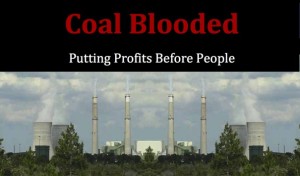(The Root) — It’s not news that coal-fired plants cause pollution, and it’s not surprising that it’s low-income people and people of color who tend to live closest to them. But “Coal Blooded: Putting Profits Before People,” a new report released this week by the NAACP, the Indigenous Environmental Network and the Little Village Environmental Justice Organization, breaks down the numbers to communicate just how bad the environmental injustice is.
The organizations ranked 378 coal-fired power plants in the nation based on their Environmental Justice Performance, a score based on the plants’ toxic emissions as well as the demographics of their surrounding areas (things like race, income and population density). The results led NAACP President and CEO Benjamin Todd Jealous to conclude, “Coal pollution is literally killing low-income communities and communities of color … There is no disputing the urgency of this issue. Environmental justice is a civil and human rights issue when our children are getting sick, our grandparents are dying early, and mothers and fathers are missing work.”
Here’s some of what they found: The 6 million Americans living near coal plants have an average income of $18,400, compared with $21,857 nationwide, and 39 percent are people of color. That’s especially troubling news for those who can’t afford to live elsewhere, because pollutants emitted by coal plants have been linked to asthma attacks, lung inflammation, chronic bronchitis, irregular heart conditions and birth defects. According to the Clean Air Task Force, coal pollution is estimated to cause 13,200 premature deaths and 9,700 hospitalizations per year across the United States.
Going beyond assessing the problem to suggest a solution, “Coal Blooded” lays out a framework for individuals, organizations and policymakers to make a just transition from coal to other energy sources. “We are committed to preserving the livelihood of our communities, our country and our climate,” stated NAACP Director of Climate Justice Programs Jacqueline Patterson.
The full report can be found on the NAACP’s website.

